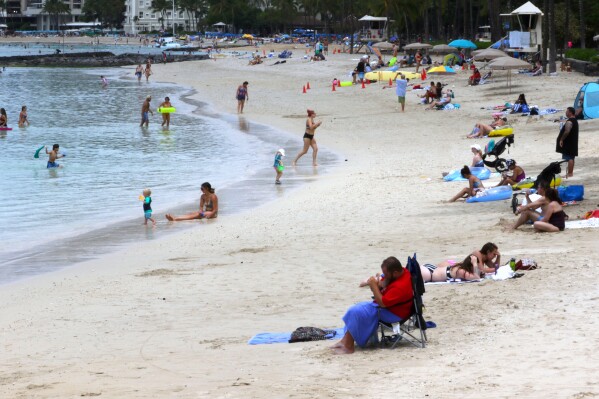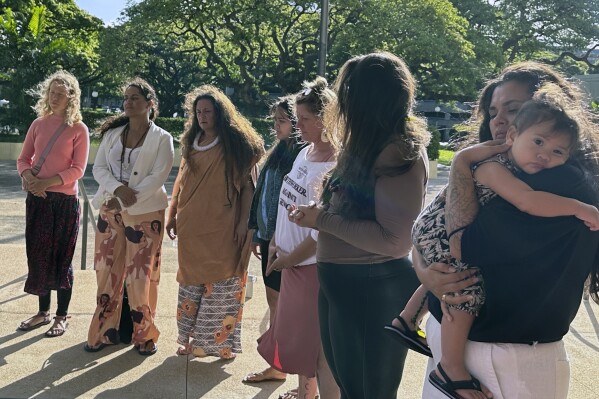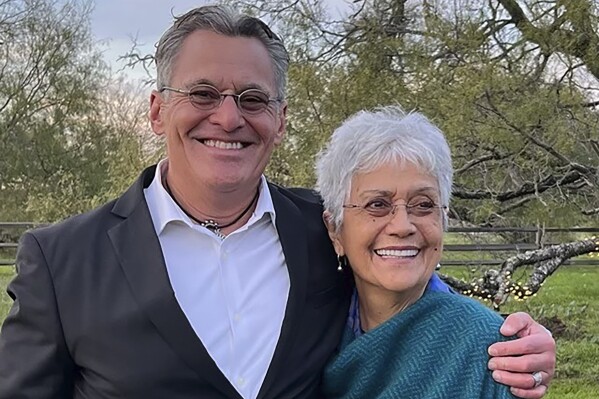Staffing shortages persist as Hawaii’s effort to expand preschool moves forward
HONOLULU (AP) — When the new school year begins in August, more than 800 Hawaii children will gain access to free public preschool.
In its largest push yet to expand public preschool, the Executive Office on Early Learning plans to open 44 new classes serving 3- and 4-year-olds, bringing the number of state-operated classrooms to just over 90.
Education advocates say it’s a crucial step in supporting Hawaii’s children and families, but that more needs to be done to grow the teacher workforce and support existing preschool programs.
Just over half of Hawaii’s 3- and 4-year-olds currently attend preschool, according to the Ready Keiki initiative, which is led by Lt. Gov. Sylvia Luke and aims to expand access to early education. The state estimates that Hawaii needs roughly 400 more classrooms to reach its ambitious goal of providing universal access to preschool by 2032.
Researchers and advocates say a high-quality preschool education can play a critical role in preparing children for academic and social success. Last year, only 30% of kindergarteners entering Hawaii public schools showed readiness in key areas like physical development, social skills, literacy and math.



According to the National Institute for Early Education Research, Hawaii was among the top 10 states for investing in public preschool but was 44th in the nation when it came to providing access for 4-year-olds in 2023.
The state has doubled down on its efforts to expand families’ access to both free and tuition-based preschool options in recent years. In addition to a $200 million investment in public preschool facilities, the state has recently expanded a subsidy program helping families cover the tuition costs of private preschools.
But barriers to expansion remain. Hawaii needs more teachers in early education, and some private providers are worried that they’ll lose children or employees to public preschool programs that are growing in number.
“They’re really being crunched right now,” said Kerrie Urosevich, executive director of Early Childhood Action Strategy.
Private Providers Are Struggling
On the Big Island, Paula Yanagi said it’s bittersweet to see the expansion of public preschool in her community. Honokaa Elementary School has operated a public preschool program since 2014, and Paauilo Elementary and Intermediate will open its first classroom in the fall.
But, Yanagi said, the expansion of public preschool can come at a cost to private providers like herself. Yanagi serves as executive director of Ka Hale O Na Keiki Preschool, which serves approximately 30 students ages 2 to 6.
Yanagi said some families have transferred from her preschool to the state-run program to save on tuition in the past. Demand for Ka Hale O Na Keiki is still high, with a waitlist of 11 students for next school year, but Yanagi said she wishes the state had invested in existing preschools instead of opening more classrooms in the community.
“We obviously want education for all keiki, no matter where,” Yanagi said. “But for providers like myself, in our mind we’re thinking, there should have been a better way to use the resources that are already out there for qualified for early childhood education.”
Luke said she hopes the state’s public preschool initiative will supplement existing preschool programs, rather than replacing them. While tuition-free preschool is appealing to many families, she added, some parents may prefer private programs that offer more flexible hours and programming during traditional school breaks.
To offer families more choices, she added, the state is expanding eligibility for its Preschool Open Doors program, which subsidizes the costs of private preschool for families. The program now serves 3-year-olds in addition to 4-year-olds, and families with higher incomes may also qualify.
The state will also raise the maximum subsidy amount from $900 to $1,500 a month beginning in the 2024-25 school year.
The expansion has seen promising results so far, Luke said, adding that the number of children enrolled in POD has increased by nearly 90% compared to last year. The Legislature also passed a bill that would extend the application period for POD to encourage more families to participate, Luke added.
Gov. Josh Green has until July 10 to sign bills into law.
This year, the application period for POD ran from January to March. The Department of Human Services, which oversees POD, plans on opening a second round of applications next month for families who missed the spring deadline.
So far, Yanagi said, participation in POD hasn’t been as high as she had hoped. While she printed out POD applications for eligible families and urged them to apply, some parents simply forgot about the program’s deadline. Now, she added, some are unsure how they’ll pay for tuition next year.
“While the efforts for Preschool Open Doors were great, and we’re happy for it, everything else has to change for that to be used at its full potential,” Yanagi said.
Workforce Shortages Persist
Despite ongoing efforts to expand access to early learning, the state is breaking even when it comes to preschool capacity, Urosevich said. Private preschools are losing about 100 seats per month, largely due to staffing shortages, she added.
The Department of Human Services has previously said approximately 30 licensed child care providers closed from 2020 to 2022.
The state is now trying to encourage more students to pursue early education training by offering scholarships and tuition subsidies through Chaminade University and the University of Hawaii. Chaminade University has seen high demand for its program so far, with nearly 350 applicants vying for 50 scholarships this year that would cover the full costs of earning an education degree.
Megan McCorriston, chief executive officer at Seagull Schools on Oahu, said she was able to retain most of her teaching staff through the pandemic. But, she added, some of her staff will reach retirement in the coming years, and she’ll need a strong pipeline of qualified teachers entering the field.
Adequate pay for preschool workers is a key part of the solution, she added. In 2022, a University of Hawaii and RAND Corporation study estimated that workers in the field of early childhood education earned an average of $13 to $17 an hour.
This year, education advocates and preschool providers rallied behind a bill that would provide subsidies and bonuses to child care and preschool workers. The initiative was intended to replace temporary bonuses that DHS had previously provided workers using Covid-19 relief funds, said Deborah Zysman, executive director of Hawaii Children’s Action Network.
But the bill died in the final days of session, and Zysman said she worries the state could see more workers leaving early education as their wages dip. Many providers can only pay their teachers more if they raise tuition, she added, and preschools want to keep their rates as affordable as possible for families.
“How else are you going to pay your people?” Zysman said.
___
This story was originally published by Honolulu Civil Beat and distributed through a partnership with The Associated Press.
Disclaimer: The copyright of this article belongs to the original author. Reposting this article is solely for the purpose of information dissemination and does not constitute any investment advice. If there is any infringement, please contact us immediately. We will make corrections or deletions as necessary. Thank you.

